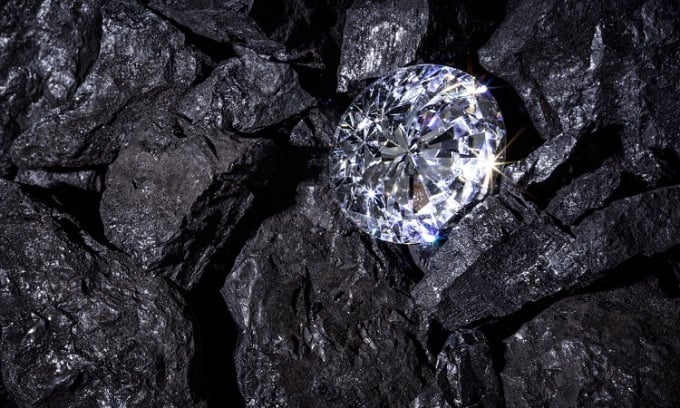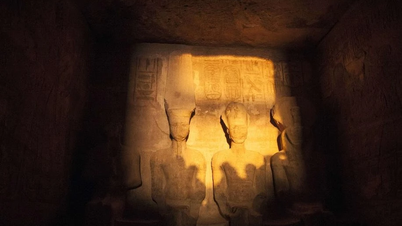Diamond and peridot are two gemstones that could compete for the title of the gemstone formed deepest below the Earth's surface.

Diamonds formed in the mantle billions of years ago before being pushed to the surface. Photo: Live Science
The deepest-forming gemstone known to scientists is diamond, which is prized for its beauty, industrial applications, and scientific data, according to Lee Groat, a mineralogist at the University of British Columbia. However, scientists still don’t fully understand how diamonds form. Laboratory tests have shown that diamonds crystallize only under extremely high pressures. Most natural diamonds are found in the upper mantle, at depths of 150 to 300 kilometers, where pressures can reach more than 20,000 atmospheres.
For a long time, diamonds have vied with peridot for the title of deepest-forming gemstone. Peridot is the gem form of the mineral olivine, which makes up more than half of the upper mantle, reaching as far as 410 kilometers (250 miles) from the base of the crust. But in 2016, scientists described a collection of super-deep diamonds 660 kilometers (400 miles) underground, and another batch in 2021 was determined to have come from 750 kilometers (450 miles). "It's very difficult to determine whether diamonds or peridot are the deepest gemstones," Groat told Live Science on October 22.
To come up with these estimates, scientists studied the diamond’s crystal shape as well as impurities, mineral fragments, or liquids that were encased in the stone as it formed. The presence of bridgmanite and iron-nickel-carbon-sulfur minerals suggests to researchers that ultra-deep diamonds likely originated in the lower mantle, which is made up of about 75% bridgmanite and grows from liquid metal surrounded by methane. At this depth, pressures can exceed 235,000 atmospheres.
Diamonds are also thought to be incredibly old. Some estimates suggest that the diamonds on Earth today formed 3.5 billion years ago. Their longevity comes from the strength of their chemical bonds. Diamonds are made of carbon, and because they form under high pressure, they require a lot of force to break their bonds. Heating a diamond above 900 degrees Celsius will cause it to transform into graphite.
Gemologists don’t need to dig deep into the earth to study diamonds, as the deepest humans have ever drilled is the Kola Superdeep Borehole in Russia (12.6 km). Instead, diamonds are brought to the surface by a unique type of magma called kimberlite. Kimberlite magma is typically volatile, erupting at speeds of 30 m/s and pulling diamonds from the surrounding rock. In this way, gems formed billions of years ago are erupting to the surface in months, or even hours.
In addition to their aesthetic value and natural hardness, which can be used in knife blades, drill bits, and polishing powders, diamonds contain invaluable scientific information, says Ananya Mallik, an experimental petrologist at the University of Arizona. In many cases, diamonds are the only source of information researchers can use to understand the Earth’s interior and the processes that occur there.
An Khang (According to Live Science )
Source link






![[Photo] Keep your warehouse safe in all situations](https://vphoto.vietnam.vn/thumb/1200x675/vietnam/resource/IMAGE/2025/10/1/3eb4eceafe68497989865e7faa4e4d0e)














![[Video] Hanoi continues to lead the country in innovation](https://vphoto.vietnam.vn/thumb/402x226/vietnam/resource/IMAGE/2025/10/2/6651caeab9a04120a7eb185da97226c8)















![[Photo] President of the Cuban National Assembly visits President Ho Chi Minh's Mausoleum](https://vphoto.vietnam.vn/thumb/1200x675/vietnam/resource/IMAGE/2025/10/1/39f1142310fc4dae9e3de4fcc9ac2ed0)






























































Comment (0)